Rejuvenated Knives
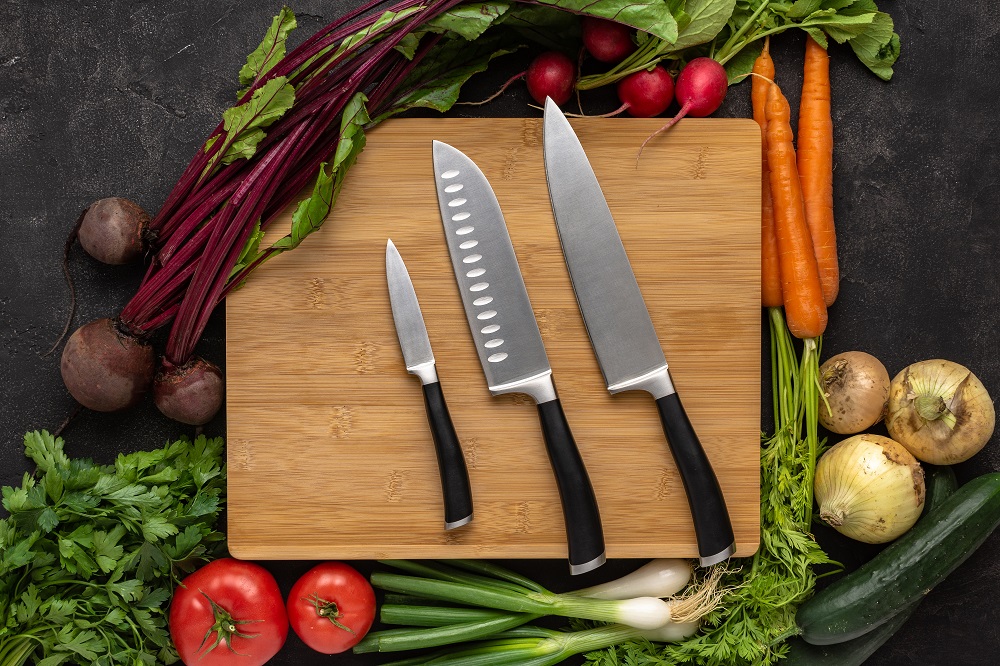
Rejuvenated Knives in a Nutshell
Ditch the Store – We Sharpen at Your Door!
No more running to the store to sharpen your knives and tools. With our convenient door-to-door service, we pick up your dull items from your doorstep and have them back to you, sharp and ready, in just 30 minutes.
Our Services:
Kitchen Knives: We sharpen all types of kitchen knives, including Chef's, Paring, Santoku, Bread, Boning, Utility, Carving, Fillet, Cleaver, Pocket knives, and all types of Serrated and Scalloped knives.
Kitchen Utensils: We ensure your kitchen utensils are in top shape by sharpening Poultry Shears, Mandoline Blades, and Peelers.
Garden Tools: Keep your garden tools sharp and effective with our sharpening service for Pruning Shears, Hedge Trimmers, Loppers, Lawn Mower Blades, Axes, Edgers, and Grass Shears.
Enjoy the convenience and quality of our sharpening services, right at your doorstep!
What our Customers Say About Us
Products / Services
Kitchen Knives Sharpening
Kitchen Utensils Sharpening
Garden Tools Sharpening
Read our Recent Articles
The Right Way to Clean Kitchen Knives – What You Need to Know, Part 1
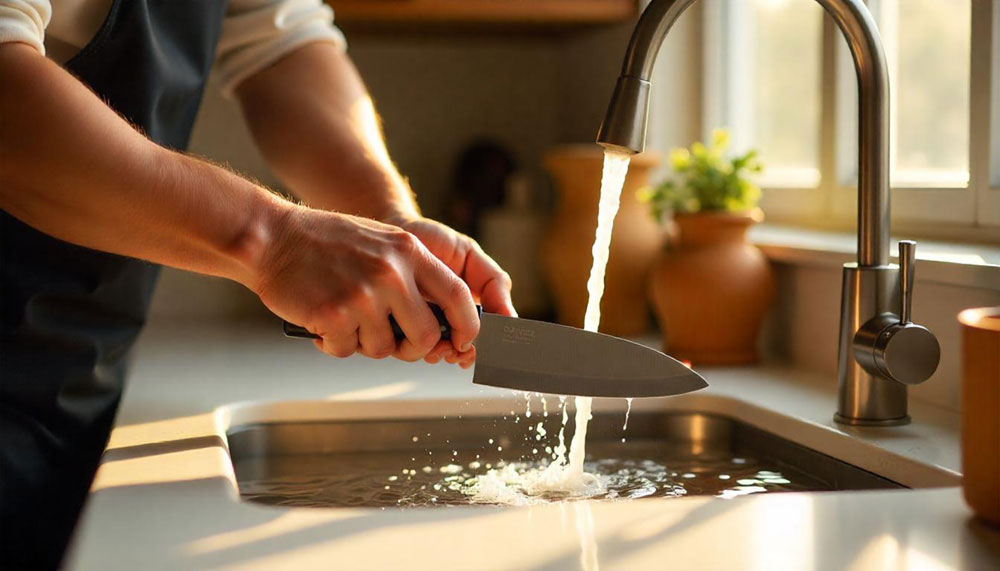 Having spent a lot to buy one or more great kitchen knives, it's important to know how to clean them. It's not only a matter of cleanliness and hygiene; it's also a way to protect your investment.
Having spent a lot to buy one or more great kitchen knives, it's important to know how to clean them. It's not only a matter of cleanliness and hygiene; it's also a way to protect your investment.
Kitchen Knives and How to Use Them Safely – The Basics, Part 1
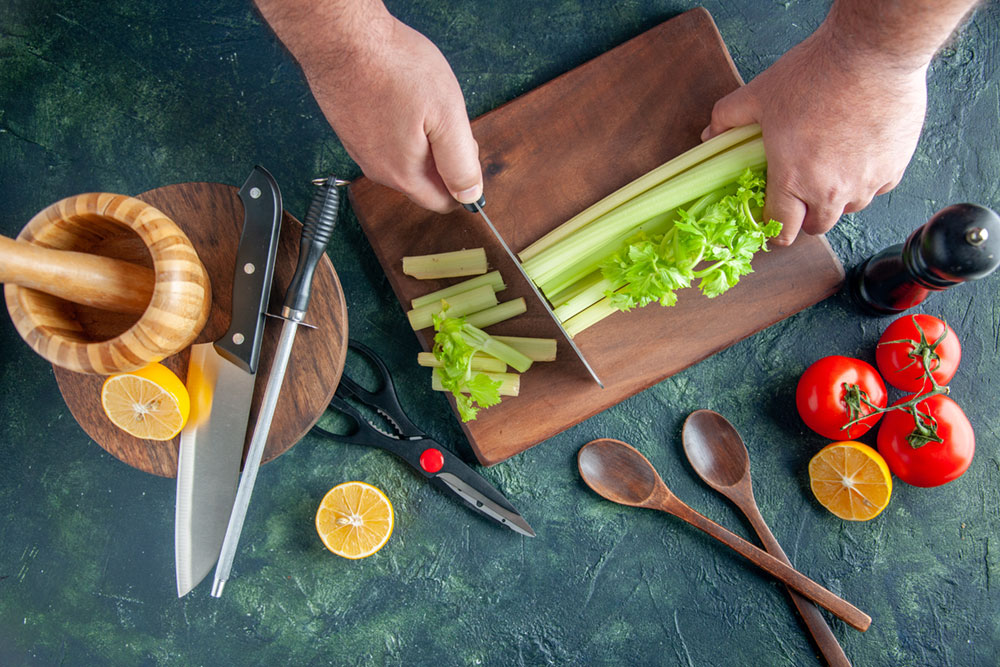 All articles on the subject of knives, especially kitchen ones, will tell you that a sharp knife is safer to use than one with a dull blade. While that is true for many reasons, it does not mean that you can ever let your guard down while using a knife.
All articles on the subject of knives, especially kitchen ones, will tell you that a sharp knife is safer to use than one with a dull blade. While that is true for many reasons, it does not mean that you can ever let your guard down while using a knife.
Cut Smarter, Not Harder: Why Professional Knife Sharpening Makes Sense
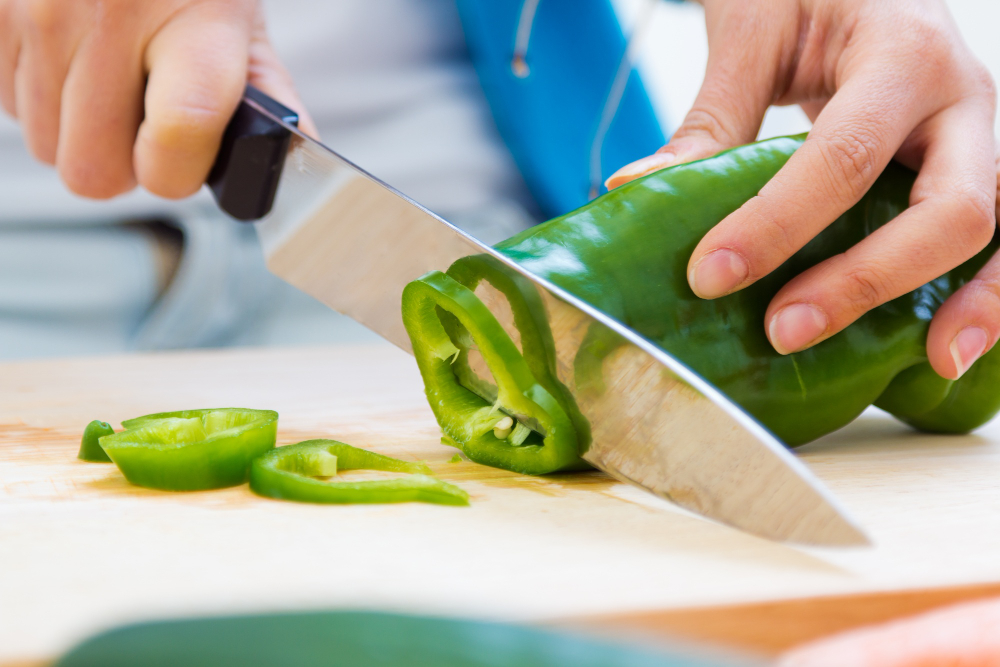 When income and expenditures are both being squeezed, the temptation to save money by increasing the number of DIY jobs you do around the house increases. Some of these tasks require no special skills – all that is needed is time and energy. Others, however, are projects that you should not try to do yourself.
When income and expenditures are both being squeezed, the temptation to save money by increasing the number of DIY jobs you do around the house increases. Some of these tasks require no special skills – all that is needed is time and energy. Others, however, are projects that you should not try to do yourself.
Sharper Service: The Benefits of Concierge Knife Sharpening, Part 1
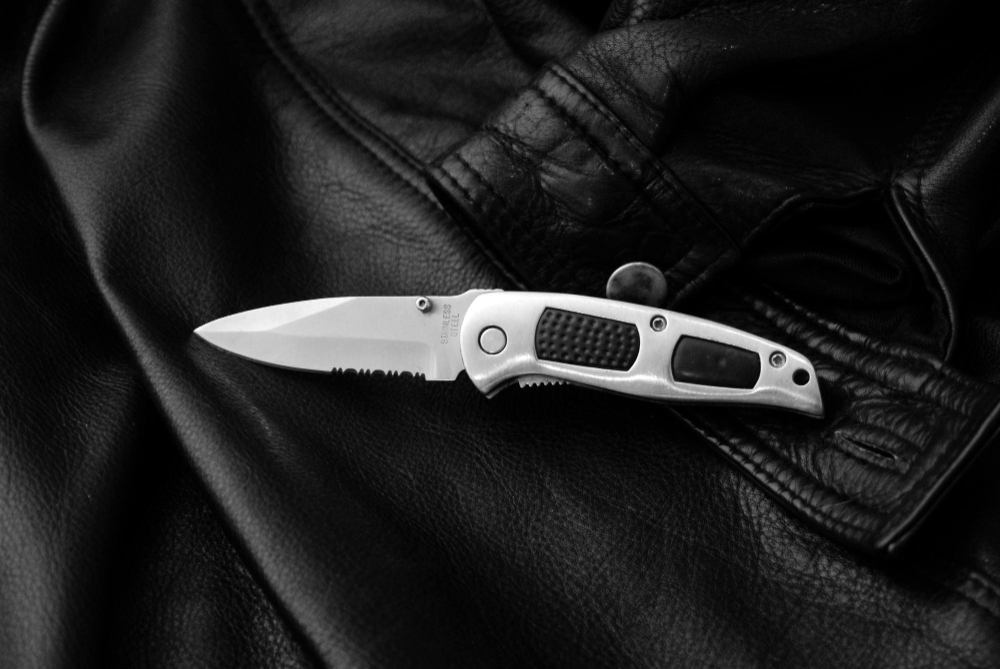 People who spend time in the kitchen know how important it is to have sharp knives. It not only makes cutting and chopping easier, but it also makes it possible to cut precisely which improves the cooking and appearance of the food finally, and perhaps most importantly, sharp knives are a pleasure to use.
People who spend time in the kitchen know how important it is to have sharp knives. It not only makes cutting and chopping easier, but it also makes it possible to cut precisely which improves the cooking and appearance of the food finally, and perhaps most importantly, sharp knives are a pleasure to use.
Easy Mail-in Knife Sharpening Solutions May Not Be So Easy in the End
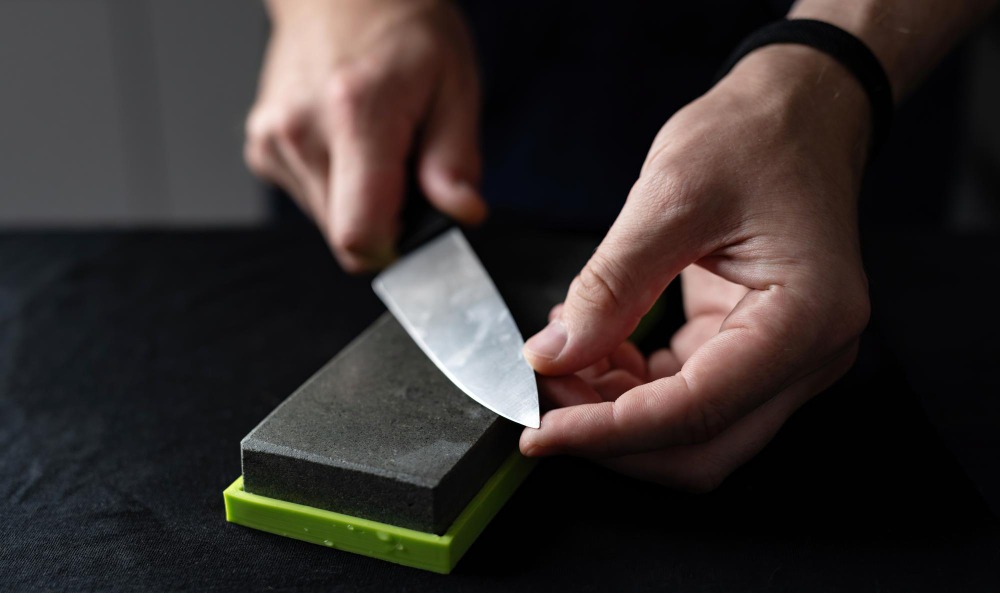 Anyone who cooks knows the pleasure of working with sharp knives. They make cutting, peeling, dicing, and the rest so easy, quick, and hassle-free. But knives do not stay sharp forever, no matter how well you care for them. Knives become dull slowly and it's easy to not notice the change in a knife’s cutting ability until the blade has become dull.
Anyone who cooks knows the pleasure of working with sharp knives. They make cutting, peeling, dicing, and the rest so easy, quick, and hassle-free. But knives do not stay sharp forever, no matter how well you care for them. Knives become dull slowly and it's easy to not notice the change in a knife’s cutting ability until the blade has become dull.
Manual vs. Electric Knife Sharpeners - Which Is Better?
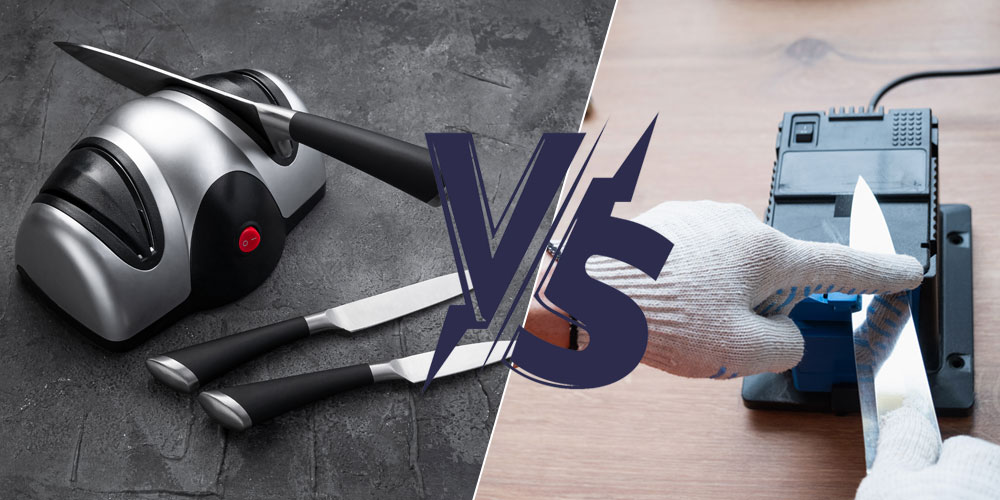
Knife blades do become dull with use – that is one of the few certainties in life. Another certainty is the disagreement that people have over the way to deal with the dull knife problem. The right sharpening can make all the difference to the cooking experience and the food that comes out of the kitchen.
Wüsthof Knives: A Sharp History, Crafty Handles, and How Rejuvenated Knives Keeps Them on Point
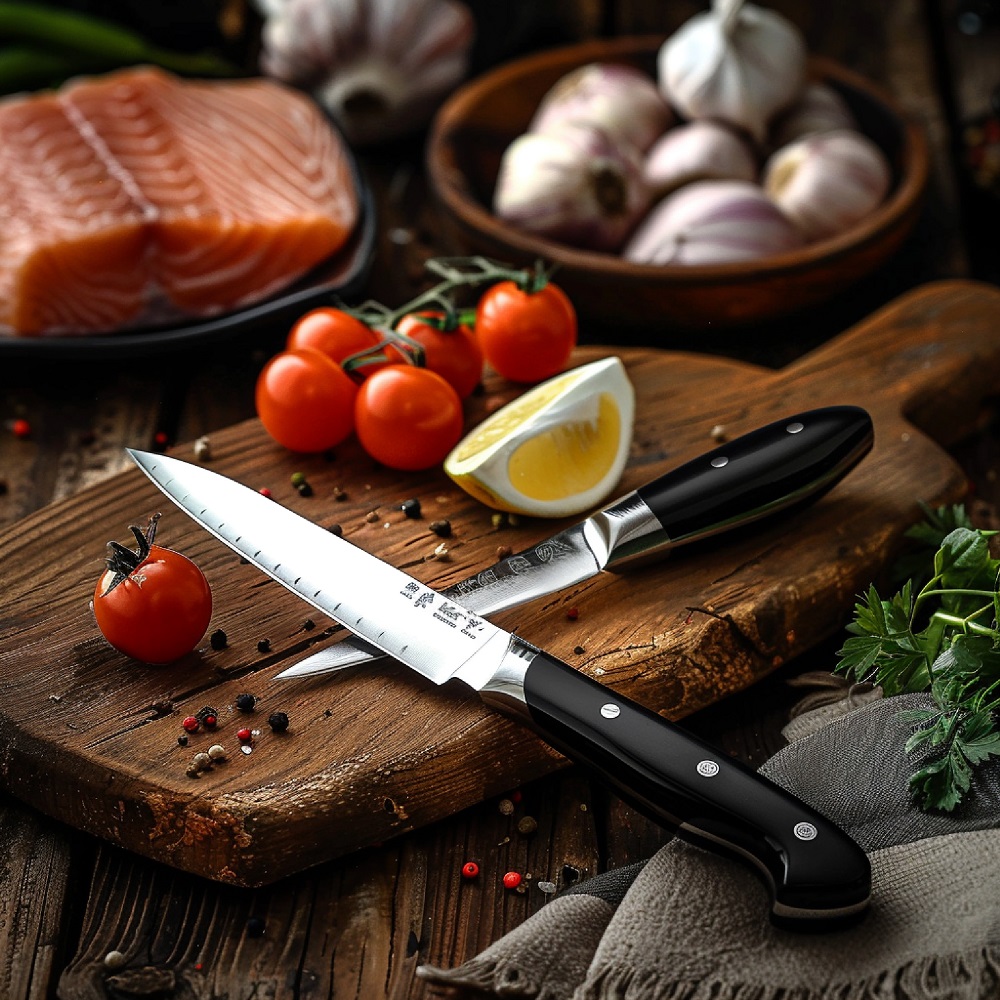 Wüsthof knives have carved their way into kitchens across the globe, from professional chefs to home cooks alike. Known for their precision and craftsmanship, each Wüsthof knife is designed with performance in mind. Whether you’re slicing vegetables, carving a roast, or simply trying to dice onions without tears, Wüsthof ensures every cut is a breeze.
Wüsthof knives have carved their way into kitchens across the globe, from professional chefs to home cooks alike. Known for their precision and craftsmanship, each Wüsthof knife is designed with performance in mind. Whether you’re slicing vegetables, carving a roast, or simply trying to dice onions without tears, Wüsthof ensures every cut is a breeze.
Frequently Asked Questions about our Products / Services
What are the different methods for knife sharpening?
There are several methods for knife sharpening, each offering different benefits and levels of precision. The most common methods include:
1. Whetstones: Also known as sharpening stones, whetstones are highly effective for achieving a sharp edge. They come in various grits and require water or oil to lubricate the surface. This method offers precise control and is ideal for professional-grade knives.
2. Electric Sharpeners: These devices use motorized wheels or belts to sharpen knives quickly and efficiently. They often feature multiple stages for coarse and fine sharpening, making them suitable for home use where convenience is key.
3. Manual Sharpeners: These typically include pull-through sharpeners with preset angles or manual honing tools. They are user-friendly and provide a quick way to maintain sharpness, though they might not be as precise as whetstones.
4. Honing Rods: Used primarily for realigning the knife's edge rather than sharpening, honing rods help maintain blade sharpness between more intensive sharpening sessions.
Each method has its advantages, depending on your knife care needs and level of expertise.
How do I know if my knife is sharp enough?
To determine if your knife is sharp enough, there are a few simple tests you can perform. One of the most popular methods is the paper test. Hold a piece of paper upright and try slicing through it. A sharp knife should easily cut through the paper with minimal effort, while a dull blade will struggle or tear the paper. This is a quick and easy way to gauge the sharpness after knife sharpening.
Another test is the tomato test. Tomatoes have a thin skin that requires a sharp edge to cut through cleanly. If your knife can slice through a tomato effortlessly without crushing or snagging, it’s sharp enough. Additionally, you can check the blade visually. A sharp knife will have a clean, straight edge with no visible nicks or dull spots. Finally, you can feel the edge lightly with your thumb; a sharp knife should feel smooth yet firm without excessive pressure.
What is the best method for sharpening pruning shears?
The best method for sharpening pruning shears begins with thoroughly cleaning the blades to remove dirt, sap, and rust. This ensures that the sharpening tool can work efficiently. Next, take a sharpening stone, carbide sharpener, or diamond file, which is ideal for pruning shears. Hold the sharpener at the same angle as the blade's bevel, typically 20-25 degrees. Using smooth, consistent strokes, glide the sharpener along the blade's edge from the base to the tip.
After sharpening one side, flip the shears and use the sharpener to gently remove any burrs from the flat side of the blade. Be sure to sharpen both blades evenly for a clean cut. Once sharpened, apply a light coat of oil to prevent rust.
By following these steps on How to Sharpen Pruners and Shears Properly, you ensure the longevity and efficiency of your pruning shears, making your gardening tasks smoother and more effective.
What types of knives can be sharpened with custom services?
Custom Knife Sharpening Services can sharpen a wide variety of knives, ensuring that each type is treated with the appropriate technique for optimal results. Kitchen knives are among the most common, including chef’s knives, paring knives, serrated knives, and utility knives. These knives require careful sharpening to maintain their precision and performance, whether using a whetstone, honing rod, or specialized machine.
In addition to kitchen knives, these services can also sharpen hunting knives, pocket knives, and outdoor knives, which often require more robust techniques due to their thicker, heavier blades. Specialty knives like fillet knives, cleavers, and boning knives benefit from custom sharpening to maintain their delicate or sturdy edges.
Custom Knife Sharpening Services also cater to high-end knives, such as Japanese or custom-made blades, where the sharpening process is tailored to the knife's specific metal composition and edge geometry. Whether for professional chefs or outdoor enthusiasts, these services ensure knives are restored to peak performance.
What’s the difference between sharpening and honing a knife?
The difference between sharpening and honing a knife lies in their purpose and technique. Knife sharpening involves removing material from the blade to create a new edge. This process restores a dull knife's cutting ability and typically requires tools like whetstones, electric sharpeners, or diamond stones. Sharpening is essential when the blade has become blunt or chipped, as it reshapes the edge to regain its original sharpness.
Honing, on the other hand, is a maintenance technique that realigns the blade's edge without removing material. Over time, a knife's edge may bend or develop small inconsistencies, even if it's still sharp. Using a honing rod, often made of steel or ceramic, straightens the edge, preserving its cutting performance.
While honing can keep a knife functional longer, knife sharpening is necessary when the blade no longer cuts effectively. Regular honing and occasional sharpening ensure optimal knife performance and longevity.
Can I sharpen my knives at home, or should I hire a professional?
You can sharpen your knives at home if you have the right tools and understand proper knife sharpening techniques. Tools like sharpening stones, honing rods, or even electric knife sharpeners are designed for home use and can help you maintain a sharp edge with regular practice. Using these tools requires consistency and attention to detail, especially when maintaining the correct angle (typically 15–20 degrees). Home sharpening is convenient, cost-effective, and allows you to keep your knives in good condition for everyday use.
However, for high-end or specialized knives, hiring a professional might be the better choice. Professionals use advanced tools and techniques to restore blades to their optimal sharpness without risking damage. They’re especially helpful for fixing chipped or heavily worn knives. If you’re unsure about your skills or lack the proper equipment, professional knife sharpening ensures precision and longevity, keeping your blades in top-notch condition.
How do mail-in knife sharpening services work?
Mail-In Knife Sharpening Services provide a convenient way to restore dull knives without requiring a trip to a sharpening shop. The process begins by selecting a reputable service online and requesting a sharpening package. Many companies offer pre-paid shipping kits that include secure packaging and instructions to ensure safe knife transport.
Once the knives are shipped, professional sharpeners use advanced equipment and techniques to restore the blade’s edge with precision. Depending on the service, they may use whetstones, belt sharpeners, or honing systems to achieve the best results without damaging the blade. Some services also inspect knives for chips or damage and offer minor repairs.
After sharpening, the knives are carefully packed and returned within a few days, ready for immediate use. Mail-In Knife Sharpening Services are ideal for home cooks, chefs, and outdoor enthusiasts who want professional-grade sharpening without the hassle of finding a local service provider.
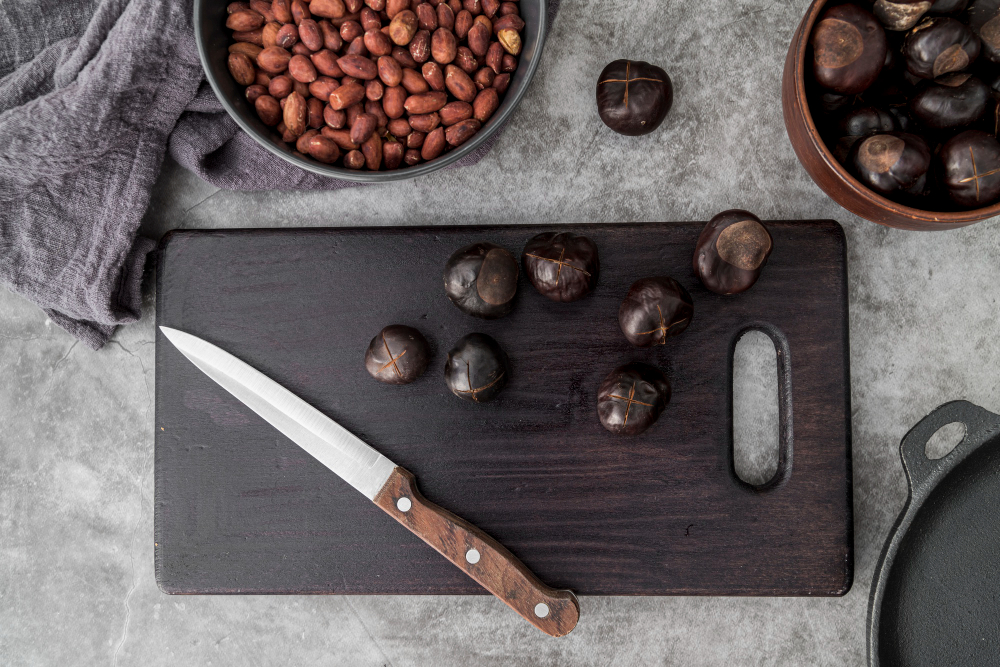
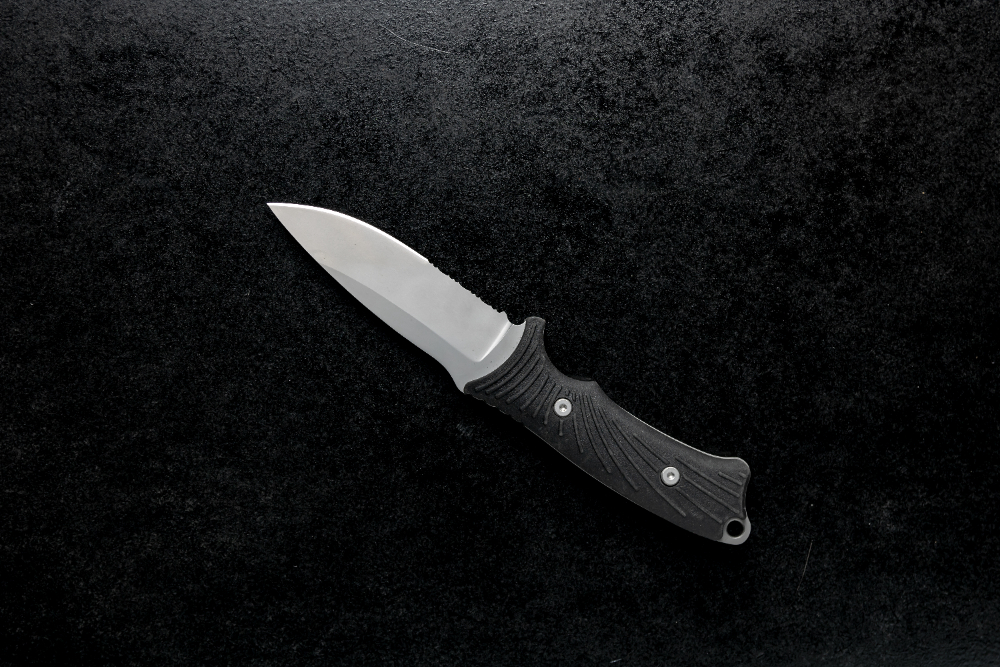
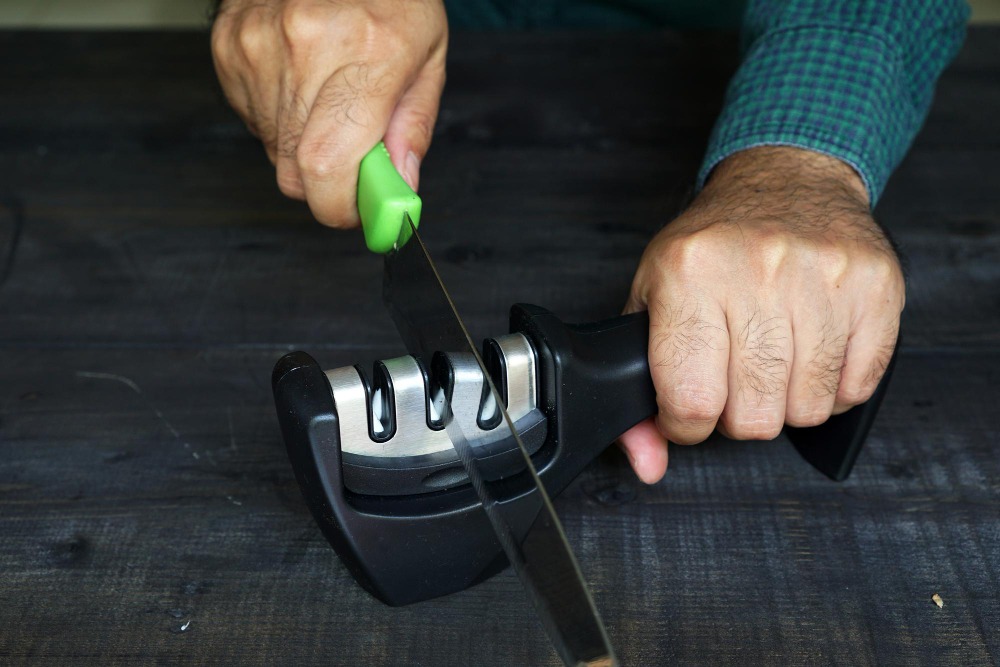 With good quality knives being so expensive, the demand for knife sharpening services has boomed. There are today endless debates on the pros and cons of different knife sharpening techniques and whether getting the job done by a local knife sharpener is better or if doing it yourself makes sense.
With good quality knives being so expensive, the demand for knife sharpening services has boomed. There are today endless debates on the pros and cons of different knife sharpening techniques and whether getting the job done by a local knife sharpener is better or if doing it yourself makes sense.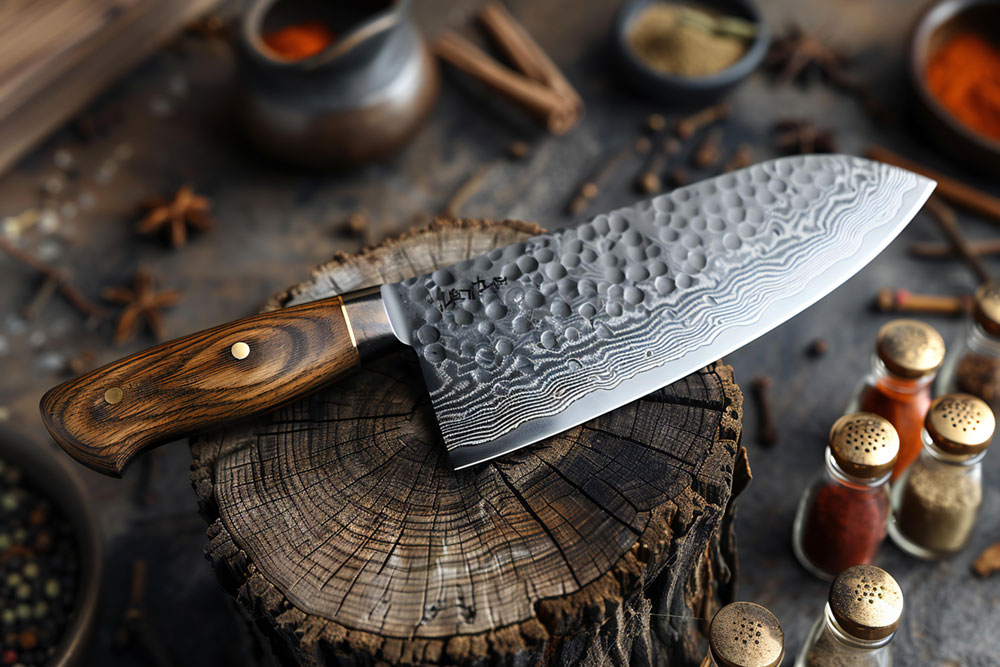 You do not have to be a Michelin-starred chef to appreciate the importance of sharp kitchen knives. Anyone who has ever done any cooking knows the pleasure of being able to cut fine and be sure of a clean cut, with no rough and ragged edges.
You do not have to be a Michelin-starred chef to appreciate the importance of sharp kitchen knives. Anyone who has ever done any cooking knows the pleasure of being able to cut fine and be sure of a clean cut, with no rough and ragged edges.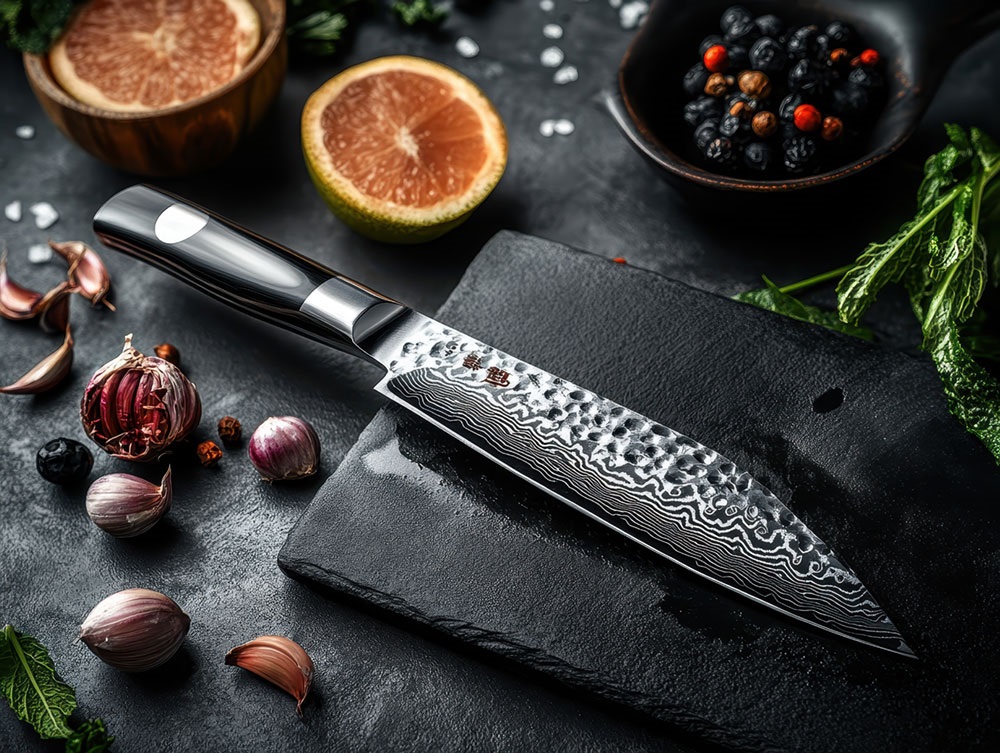
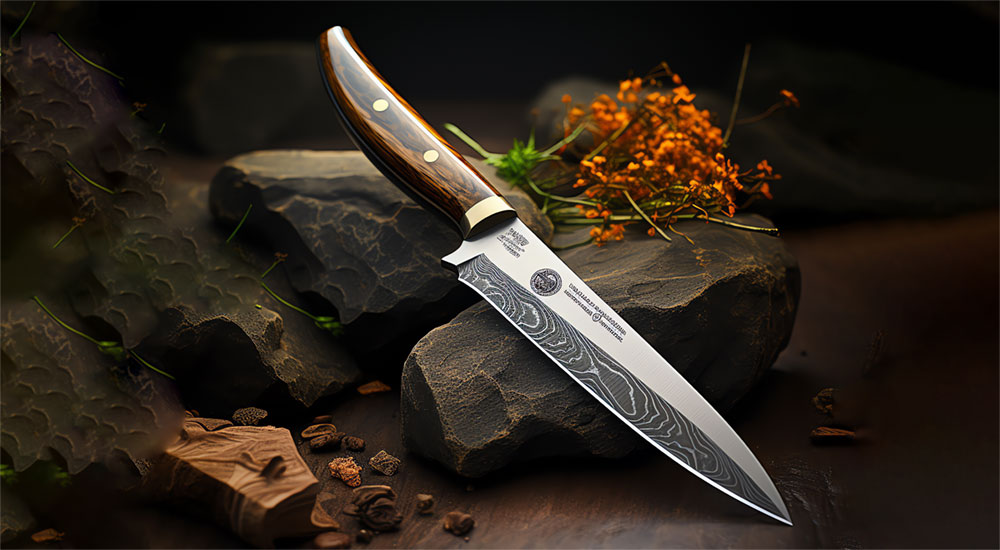 Shun (pronounced "shoon") Cutlery stands as a shining example of Japanese craftsmanship, where centuries-old tradition meets modern innovation. Established by the Kai Group in Seki City, Japan, Shun embodies the rich heritage of Japanese sword-making.
Shun (pronounced "shoon") Cutlery stands as a shining example of Japanese craftsmanship, where centuries-old tradition meets modern innovation. Established by the Kai Group in Seki City, Japan, Shun embodies the rich heritage of Japanese sword-making.